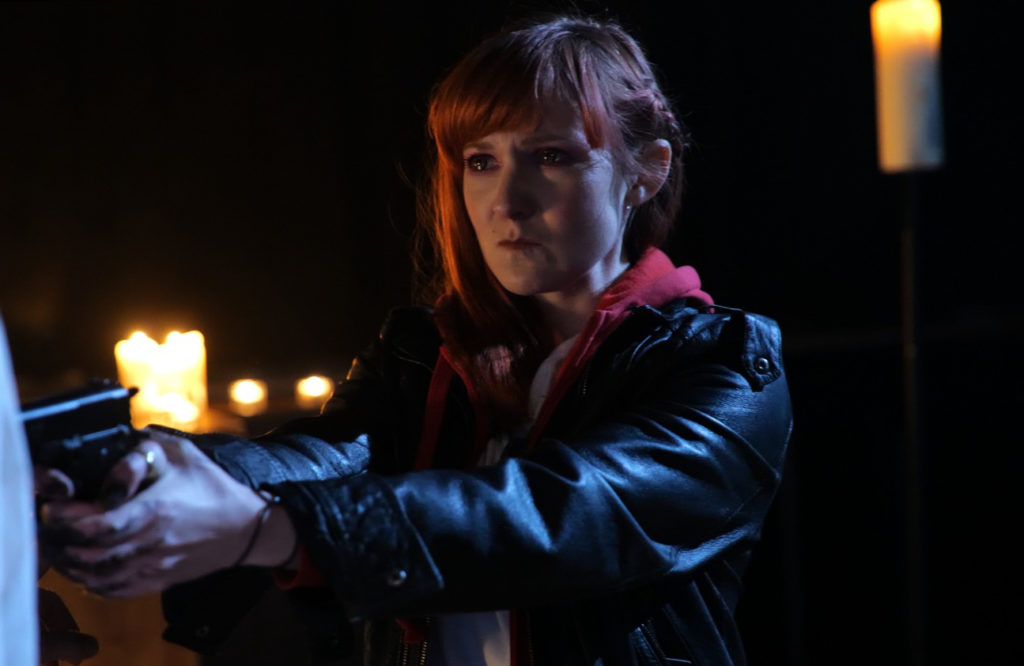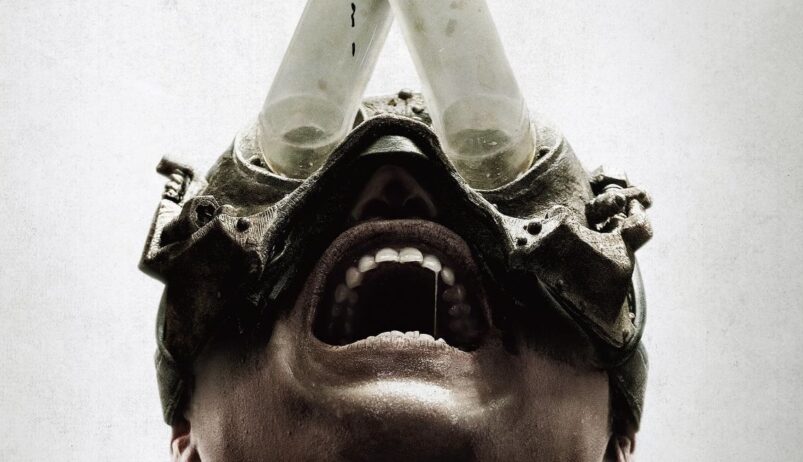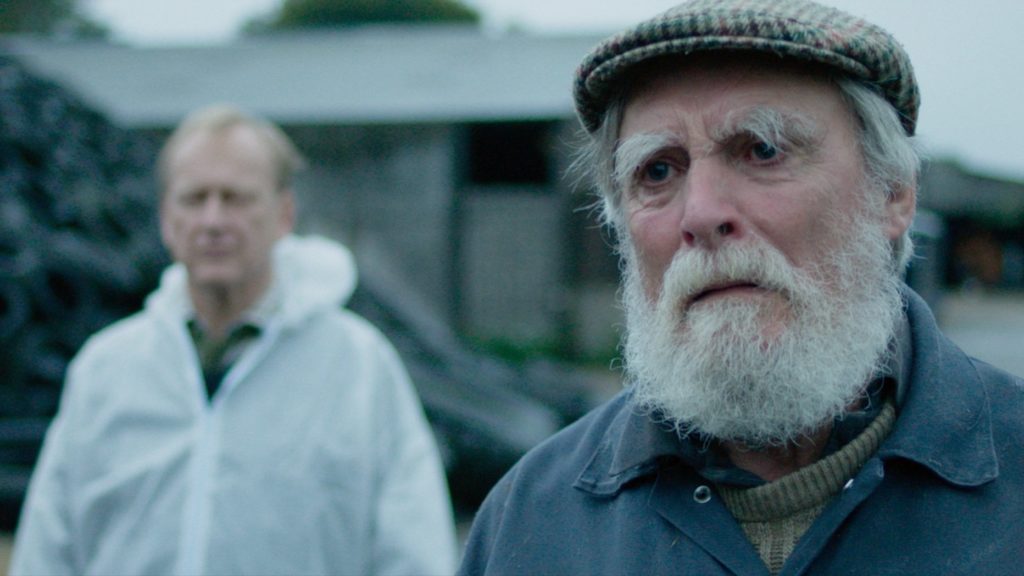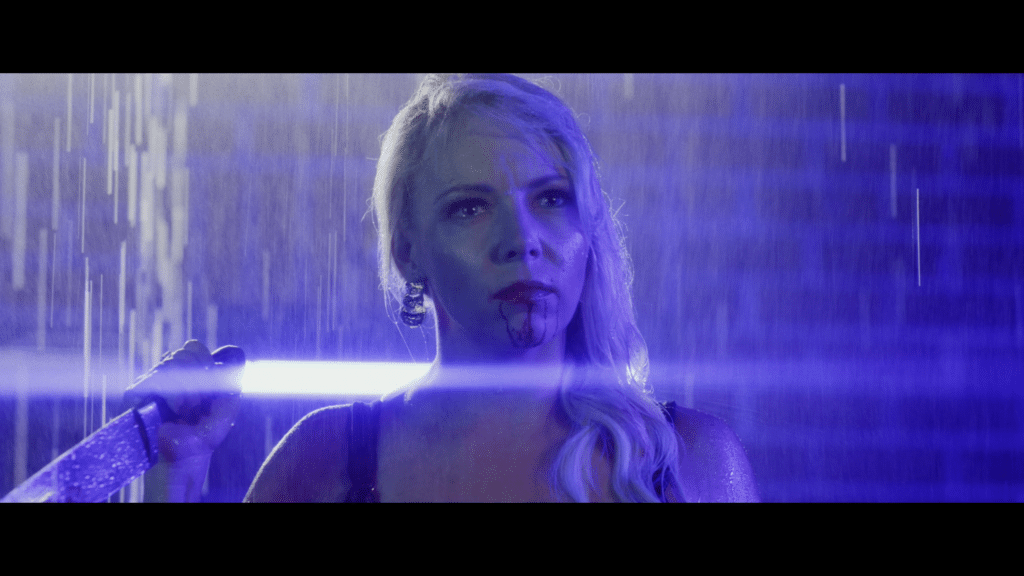
Grandma may have gotten run over by a reindeer, but this season, Santa has been bitten by a werewolf. As the holidays draw near, the feature Werewolf Santa is arriving, telling the story of – yep – if Santa Claus were bitten by a werewolf. Directed and written by Airell Anthony Hayles, this film debuted at FrightFest this year, documenting an unusual Christmas Eve where a failing YouTube channel looking for werewolves might have found its big break. Billed as a horror comedy and trying to bring the cheer, I struggled to find focused dialogue or characters to deliver a good joke and did not receive as much monster action for such a short feature as I hoped. I began this film with all the excitement of a child on Christmas Eve, but sadly by the end, it seems I’ve only received coal this year.
We begin with a brief history lesson on Hastings, Sussex, England, a place with an active coast of bootleggers, smugglers and – as legend would have it – cave-dwelling werewolves. After a modern retelling of The Night Before Christmas, we arrive with Lucy (Katherine Rodden), in Hastings on Christmas Eve, 2018. Lucy and her friend with benefits and cameraman Dustin (Charlie Preston) run a failing YouTube channel searching for the paranormal, and from Oregon to Scotland, Lucy has had no luck. Sick of holiday cheer already for a laundry list of personal reasons, Lucy says they’re there for one purpose: to investigate werewolves. After a rollercoaster of a car ride, they arrive at Lucy’s mother’s house for Christmas festivities which are… edgy, to say the least. While Lucy and her mother can’t seem to find common ground or get a conversation on cryptids started, when her father arrives Lucy lights up for the first time since we’ve met her. The fight is on though the second he walks through the door, as her mother attacks her and is provoked further by his car horn being honked by yet another new girlfriend.
Outside in the cold, Lucy sits like a lost child trying to get away from her parents bickering. As her and Dustin chat, suddenly screaming pierces the night, and a man comes stumbling from the forest clearly the victim of a mauling, and collapses, his head clawed open. After calling the police for the maimed man, the two decide to follow the investigators as they don’t buy the story they were given that the man was simply mauled by a dog. In the office, they check in the station where they find silver bullets and other mysterious things that point them towards lycanthropy, but are interrupted before they can find more on the attack. They return to the spot in the park where the man stumbled out and begin rolling footage for their fellow “Monster Hunters,” slowly walking into the forest. In the trees, the two spot “a familiar festive figure” in the middle of a bathroom break, that is, Santa, in the woods, relieving himself. As the pair film and narrate the “Santa Sighting” a werewolf comes out of nowhere, attacking Saint Nick and goring him horribly. As the jolly man stands up in shock, it seems he’s in no pain despite his exposed organs, and with a roar, he drops to his knees transforming into a werewolf himself, disappearing suddenly from view.
I wanted to like this. Holiday horror can truly be fun and I like the idea of a feral Father Christmas, but this film misses both marks on horror and humor. Costuming and practical effects don’t go very far, and the budget on this film unfortunately shows its strain. Performances all around are unconvincing and it’s hard to find a likable character in the bunch as the group bicker their way towards the climax, encountering confusing and sometimes off-putting things that I assume are supposed to be funny, such as a Christmas orgy in the woods. The constant fighting can get to be grating to a point as the group can never seem to make a decision, their indecisiveness dragging out scenes and making for some less than believable interactions and frustrating standoffs. There’s not much being done camera-wise either, even with a partial mockumentary lens involved to perhaps mix up perspectives or create tension, but this film with such a whimsical idea lacks much else in the way of inspiration. Falling victims to tropes and clichés, rewriting some of the old school rules that usually make werewolves work but still somehow lacking innovation, this felt like an attempt to recreate the success of Werewolves Within without the cast chemistry or charm.
I would say the best descriptor of this film is unfocused. At only an hour, this film still failed to keep up pace or to develop the characters or their performances. Moments that are meant to generate tension draw out into no climax, jokes that often pick at low hanging fruit typically don’t land, and unrelated dialogue scenes seem to drag on, even in this compact runtime. I know holiday horror can be hard to nail, but I was disappointed that this brought nothing new to the table, except a ferocious version of Saint Nick. The storyline becomes predictable and repetitive, and the small town legend angle made this journey feel longer than it was, as there were clearly a limited number of shooting locations. Without a character to root for, you sometimes find yourself lost; not even finding common ground in Lucy, whose certainty bordering on arrogance combined with a general bitterness and thirst for clout make her sour to receive. So unfortunately, without much to laugh at and without much in the way of scares, our title creature comes out more toothless.
An admirable swing at a fun idea, Werewolf Santa unfortunately brings no cheers or chill, but to those still curious about a lycanthropic Saint Nick, feel free to check this out – in spite of my decision to put this film on my naughty list.
Werewolf Santa (2023) is out on the 6th November 2023.









